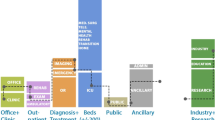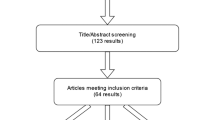Abstract
We propose an optimization model for patient delivery and medical resource allocation with capacity restrictions. Our model considers the severity of the victims’ injuries in the initial search and rescue period and their survival probabilities, which decrease proportionally with the elapsed time. We develop a mixed integer programming model to select the location and network flow of an on-site clinic for supporting first-aid treatment near disaster areas. We also build a model of a general hospital as an objective function to maximize the number of patients whose survival probability exceeds the marginal level. Our model also considers patients waiting at the on-site clinic and hospital. We apply our optimization approach in a case study with data from a department store collapse in South Korea. Our computational results will facilitate future studies of logistics to support wounded victims of disasters.




Similar content being viewed by others
References
Brown, G. G., & Vassiliou, A. L. (1993). Optimizing disaster relief: real-time operational and tactical decision support. Naval Research Logistics, 40(1), 1–23.
Caunhye, A. M., Nie, X., & Pokharel, S. (2012). Optimization models in emergency logistics: a literature review. Socio-Economic Planning Sciences, 46(1), 4–13.
Champion, H. R., Copes, W. S., Sacco, W. J., Lawnick, M. M., Keast, S. L., & Frey, C. F. (1990). The major trauma outcome study: establishing national norms for trauma care. The Journal of Trauma and Acute Care Surgery, 30(11), 1356–1365.
Chang, M. S., Tseng, Y. L., & Chen, J. W. (2007). A scenario planning approach for the flood emergency logistics preparation problem under uncertainty. Transportation Research. Part E, Logistics and Transportation Review, 43(6), 737–754.
Duran, S., Gutierrez, M. A., & Keskinocak, P. (2011). Pre-positioning of emergency items for CARE. International Interfaces, 41(3), 223–237.
Fiedrich, F., Gehbauer, F., & Rickers, U. (2000). Optimized resource allocation for emergency response after earthquake disasters. Safety Science, 35(1), 41–57.
Mete, H. O., & Zabinsky, Z. B. (2010). Stochastic optimization of medical supply location and distribution in disaster management. International Journal of Production Economics, 126(1), 76–84.
Mizumoto, T., Sun, W., Yasumoto, K., & Ito, M. (2011). Transportation scheduling method for patients in MCI using electronic triage tag. In eTELEMED 2011, the third international conference on ehealth, telemedicine, and social medicine (pp. 156–163).
Özdamar, L., Ekinci, E., & Küçükyazici, B. (2004). Emergency logistics planning in natural disasters. Annals of Operations Research, 129(1), 217–245.
Paul, J. A., & Hariharan, G. (2012). Location-allocation planning of stockpiles for effective disaster mitigation. Annals of Operations Research, 196(1), 469–490.
Rawls, C. G., & Turnquist, M. A. (2010). Pre-positioning of emergency supplies for disaster response. Transportation Research. Part B: Methodological, 44(4), 521–534.
Schleipman, A. R., Gerbaudo, V. H., & Castronovo, F. P. (2004). Radiation disaster response: preparation and simulation experience at an academic medical center. Journal of Nuclear Medicine Technology, 32(1), 22–27.
Sheu, J.-B., Chen, Y.-H., & Lan, L. W. (2005). A novel model for quick response to disaster relief distribution. Paper presented at the Proceedings of the Eastern Asia Society for Transportation Studies.
You, K. C., Ahn, M. E., Cho, Y. J., Chaeng, J. M., & Lim, K. S. (1997). Injury type in Sampung collapse. Journal of the Korean Society of Emergency Medicine, 8(2), 185–192.
Acknowledgements
This work was supported by the National Research Foundation of Korea (NRF) Grant funded by the Korean Government (MOE) (2010-0023236).
Author information
Authors and Affiliations
Corresponding author
Rights and permissions
About this article
Cite this article
Jin, S., Jeong, S., Kim, J. et al. A logistics model for the transport of disaster victims with various injuries and survival probabilities. Ann Oper Res 230, 17–33 (2015). https://doi.org/10.1007/s10479-013-1515-0
Published:
Issue Date:
DOI: https://doi.org/10.1007/s10479-013-1515-0




